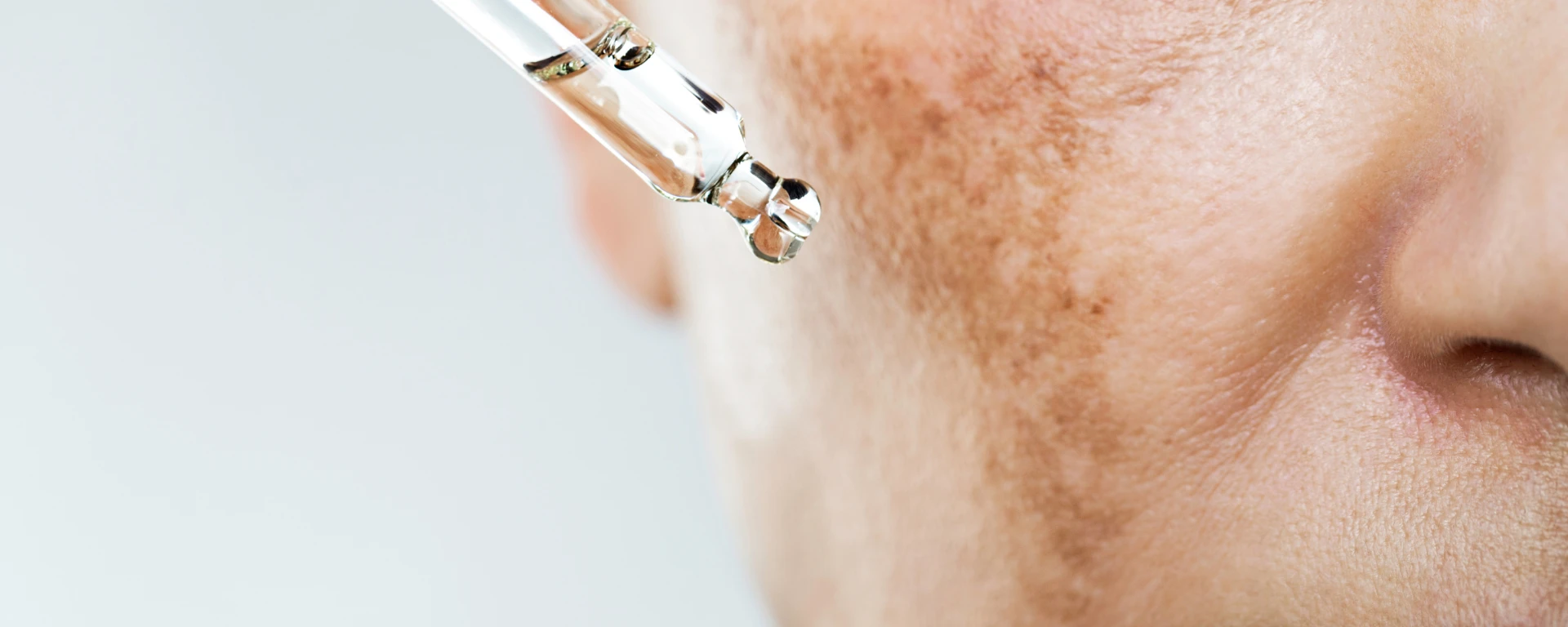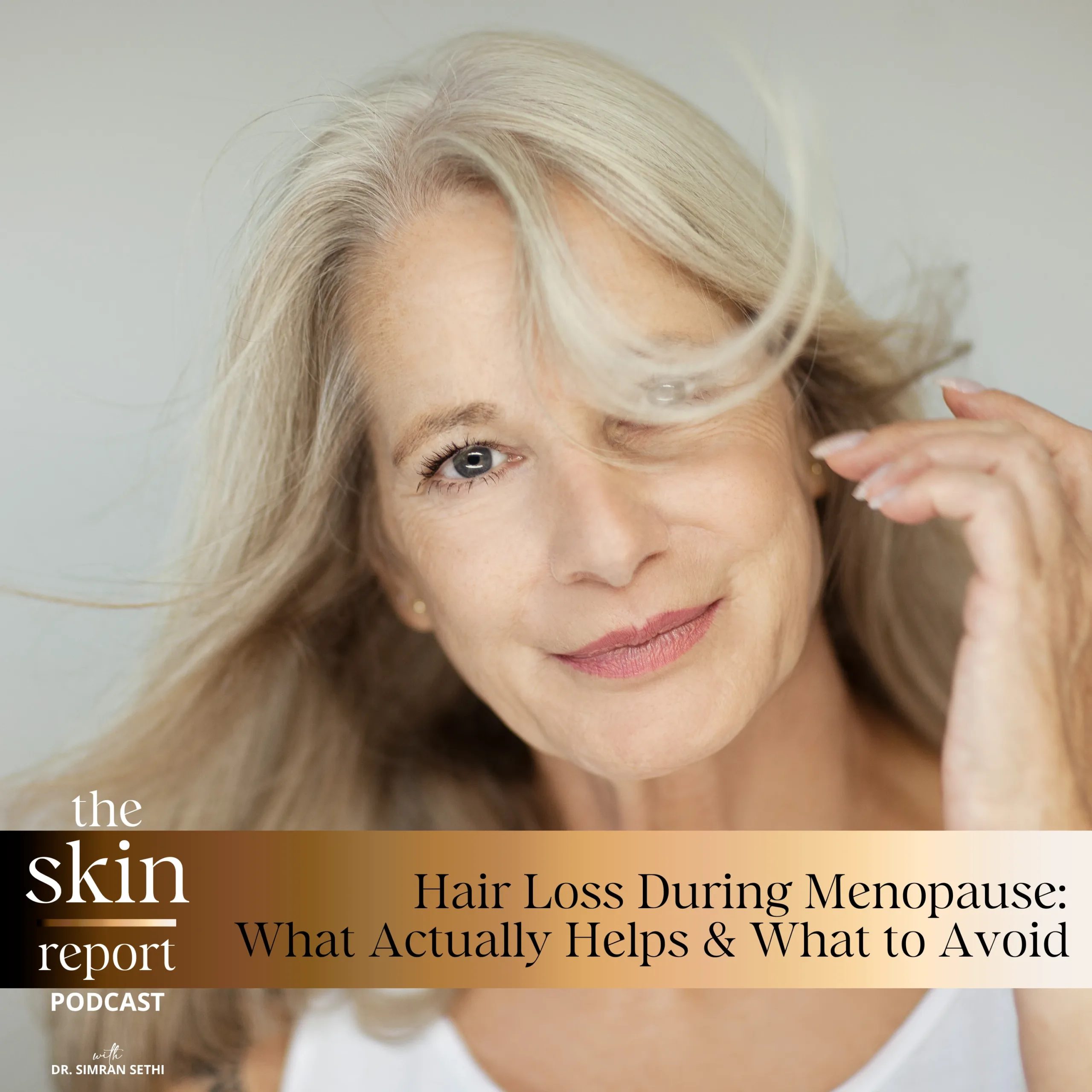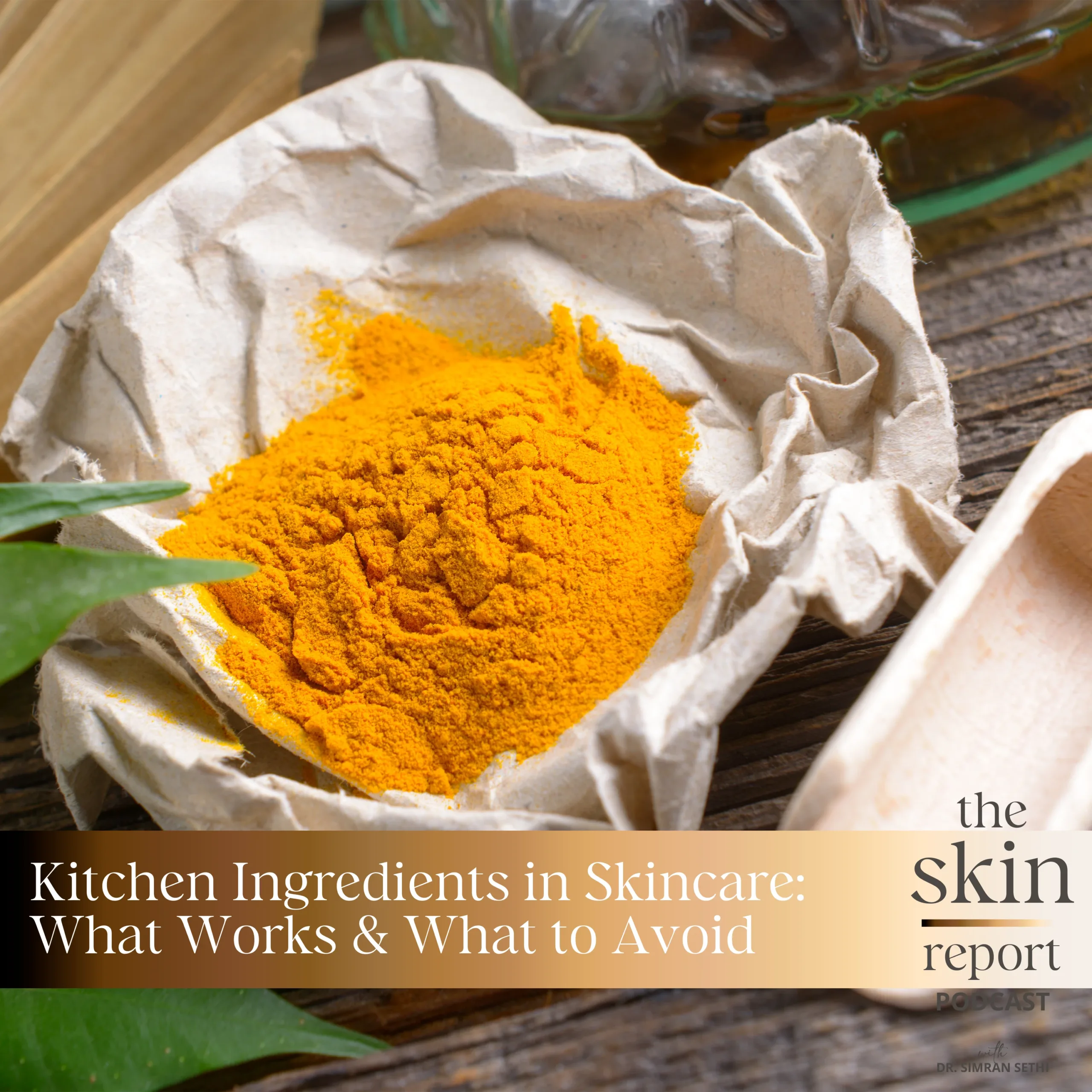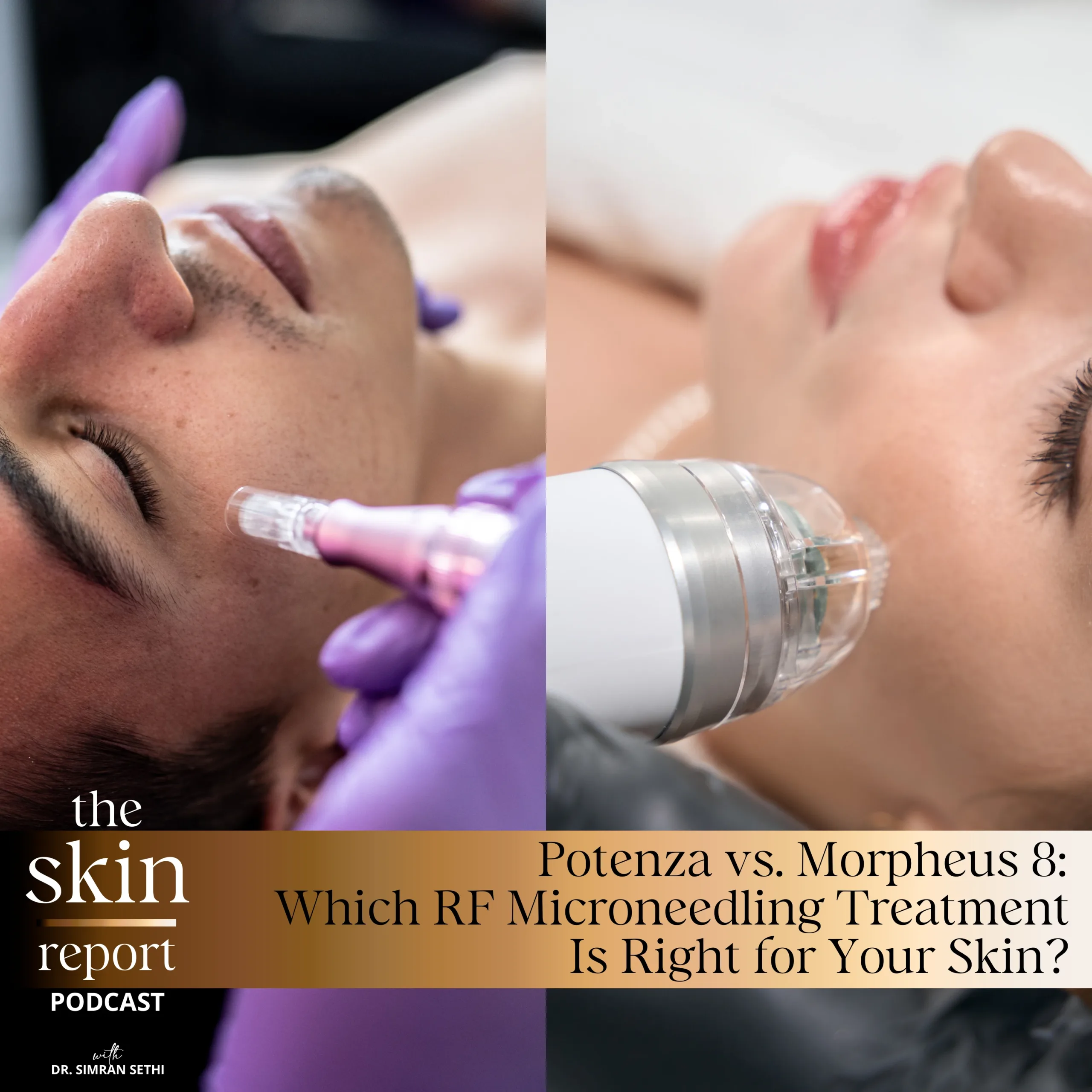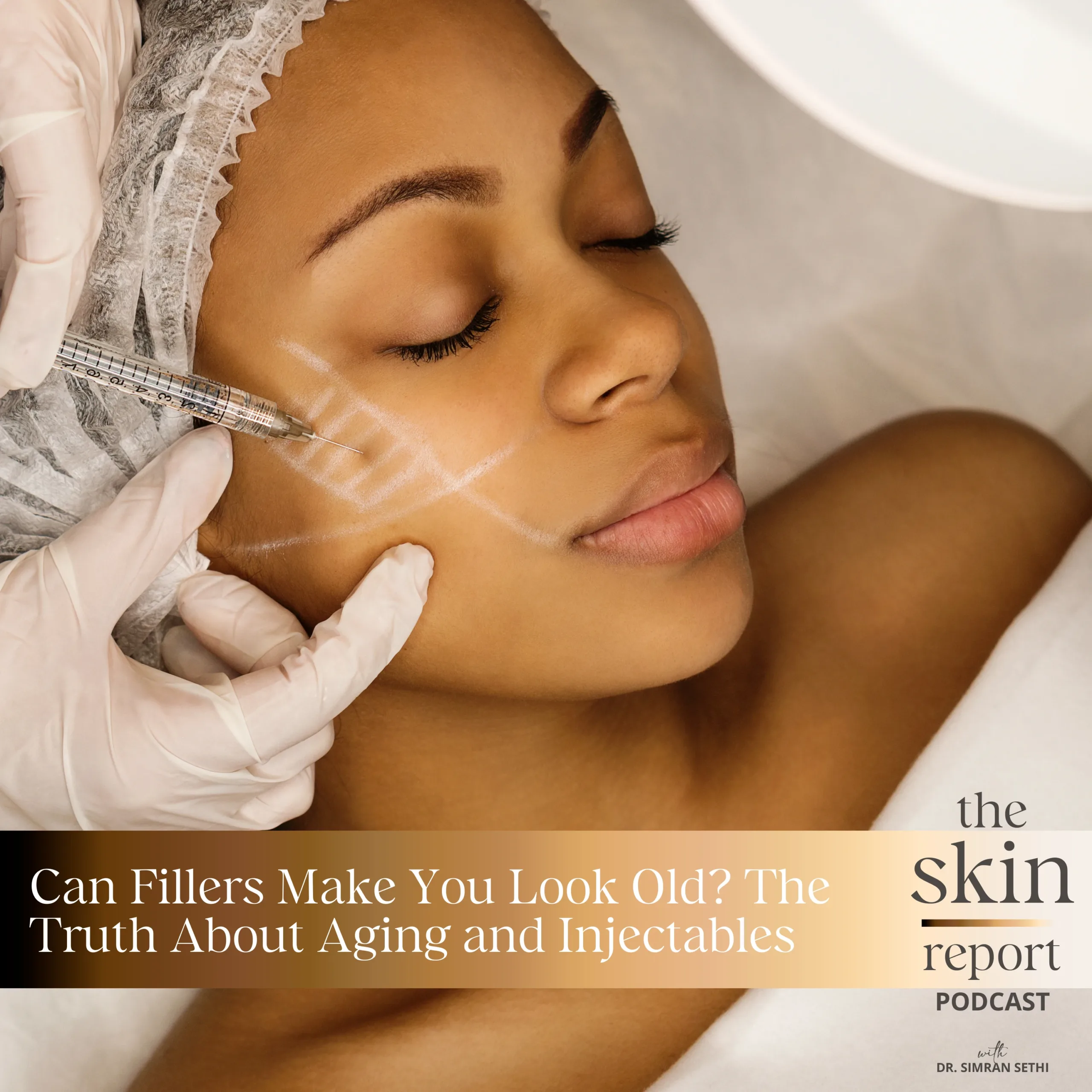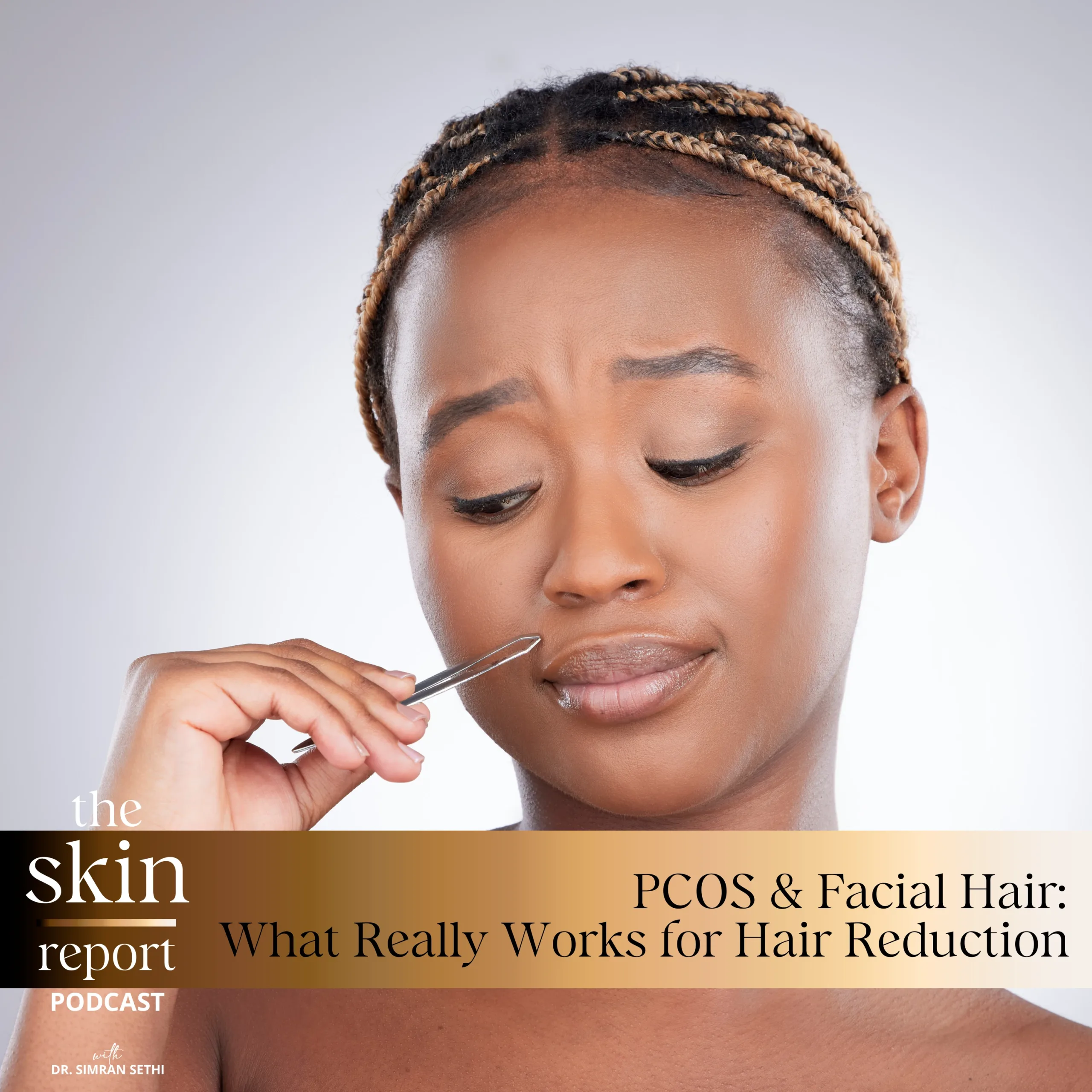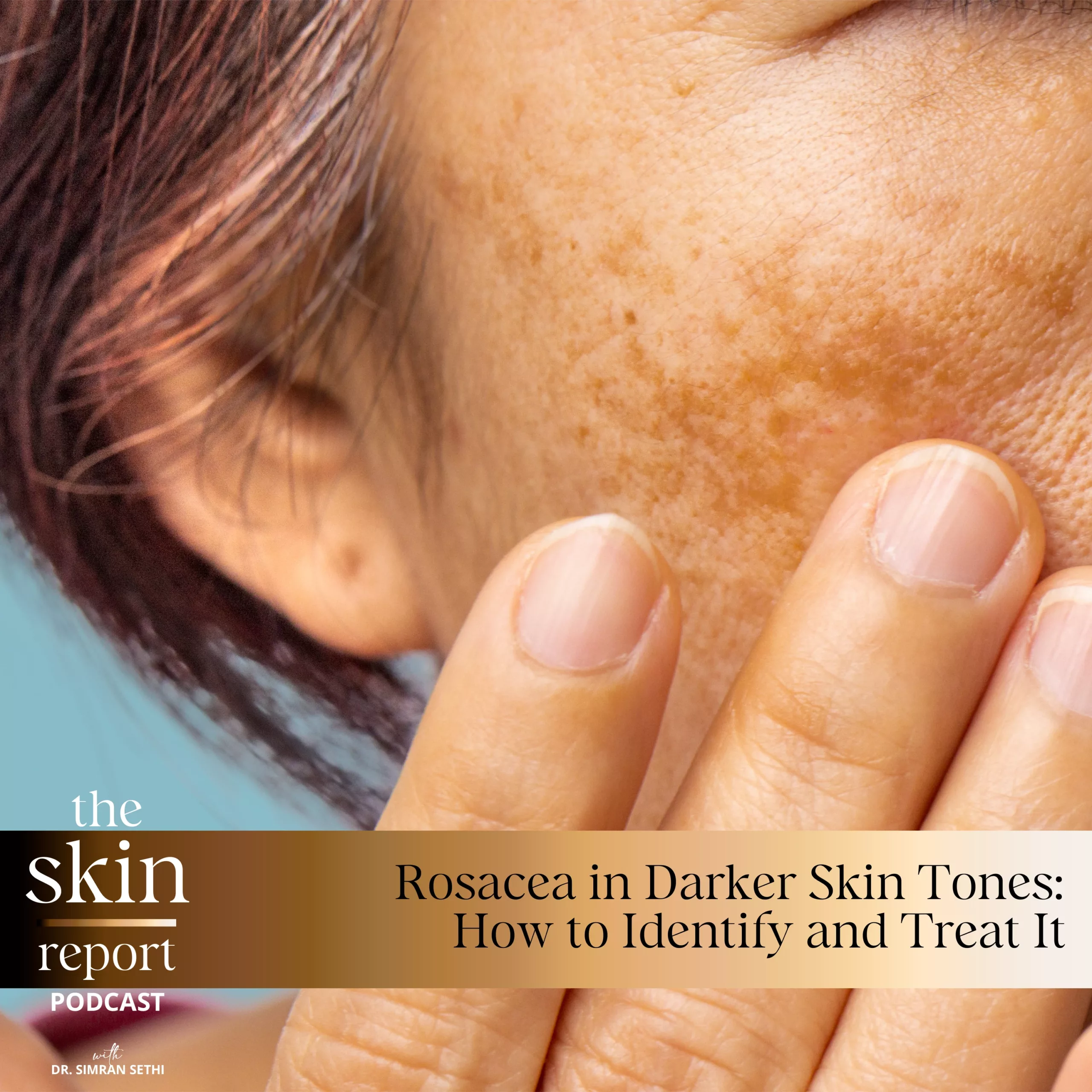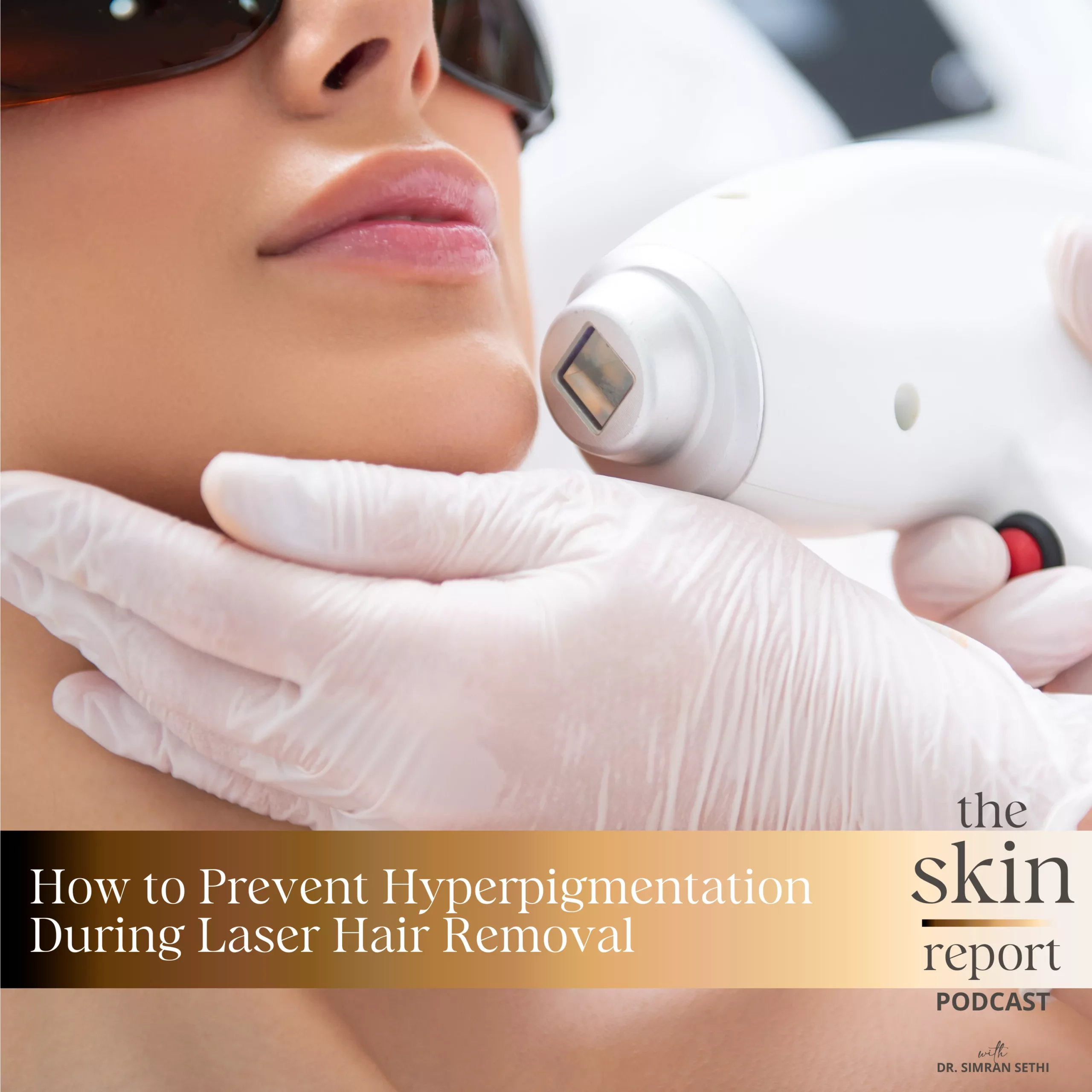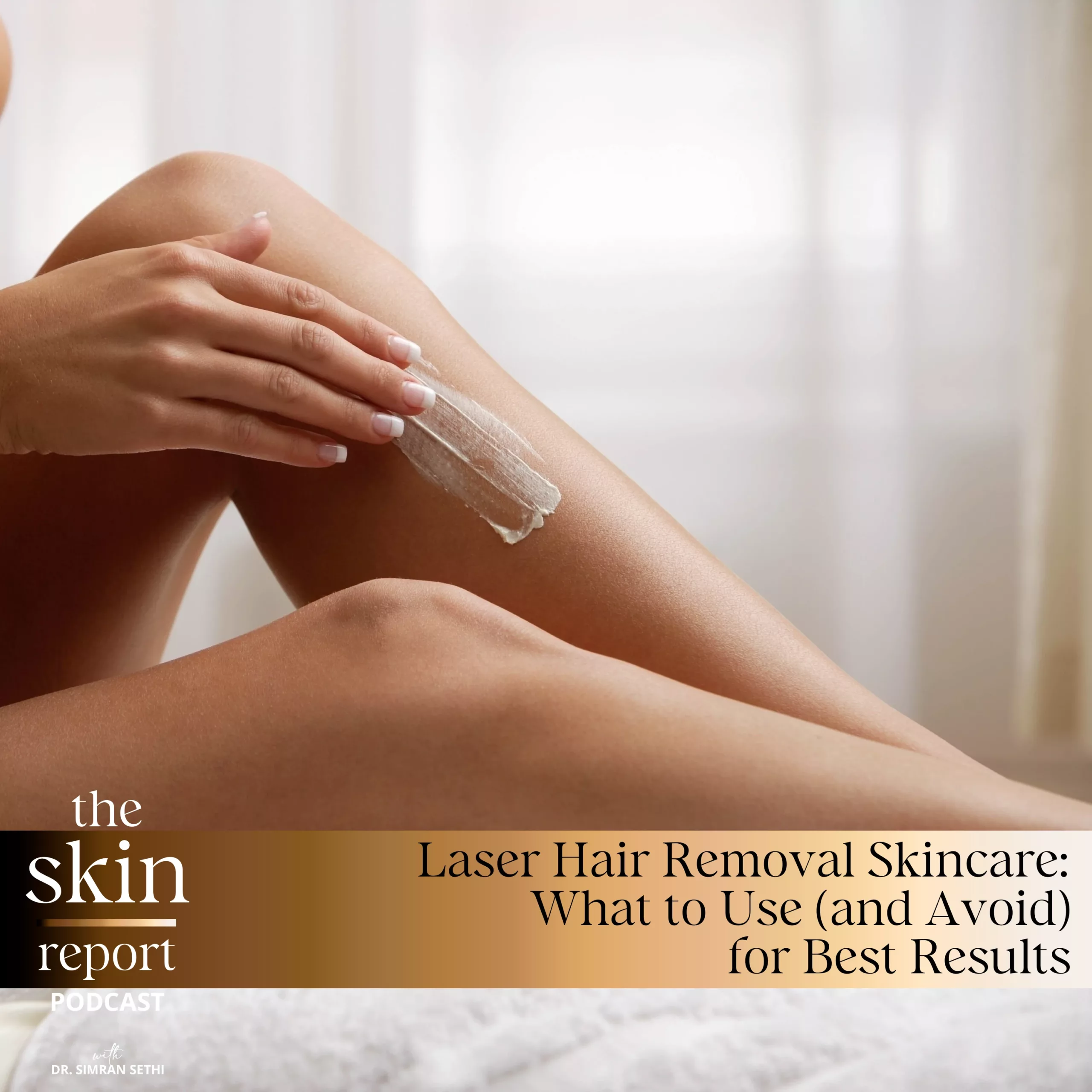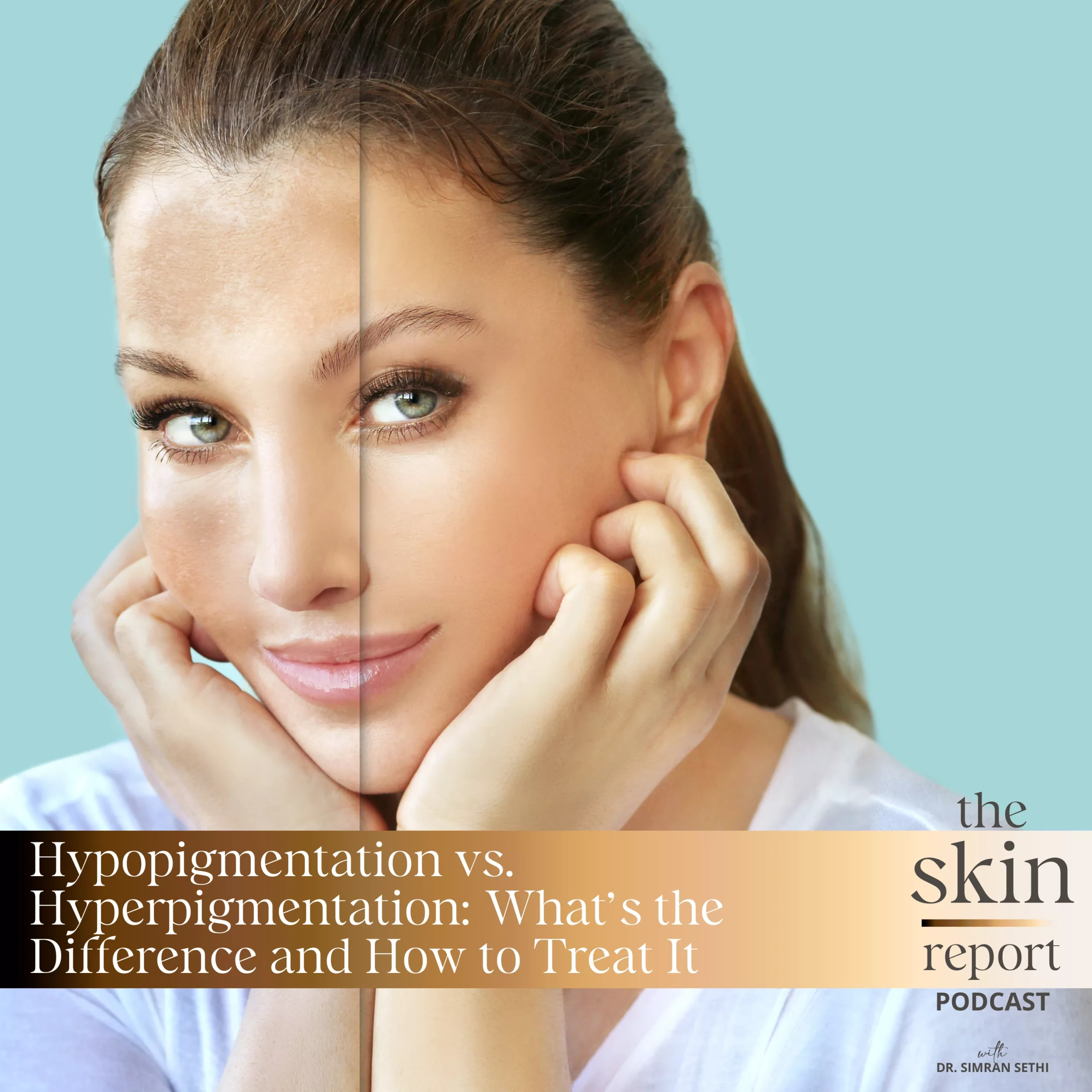Tranexamic Acid:
How to Use It for Hyperpigmentation
In this episode of The SKIN Report, Dr. Simran Sethi takes a deep dive into tranexamic acid, a powerful and increasingly popular ingredient for treating hyperpigmentation.
Learn what tranexamic acid is, how it works to reduce melanin production, and why it’s considered a safer alternative to hydroquinone. Dr. Sethi explains how to pair it with other ingredients like retinol, moisturizer, and sunscreen for best results—and what makes it effective for melasma but not post-inflammatory pigmentation or sunspots.
👉 Whether you’re new to tranexamic acid or looking to optimize your routine, this episode offers clear, science-backed guidance on getting real results.
Exclusive Offer for the Skin Report Audience:
Use SKINREPORT20 in the shopping cart to receive 20% discount
LEARN MORE!
The Skin Report Podcast : Subscribe and Download!
Skin By Dr. Sethi – Blog
Skin By Dr. Sethi – Skincare
Skin By Dr. Sethi – Beauty Instagram
Dr. Sethi’s Medical Spa
Dr. Sethi’s Medical Spa – Instagram
Hello, everyone. I’m Dr. Sethi and welcome to The Skin Report. Today we are doing a deep dive into a common or a very desired skincare ingredient, tranexamic acid. We’re going to talk about what is tranexamic acid, what is it used for, and most importantly, how do you use it, what other ingredients are needed to be combined with it to make it effective. So let’s get started. Tranexamic acid is a compound that has been shown to reduce melanocytes or melanin-producing activity. Tranexamic acid causes reduction in the activity of an enzyme called tyrosinase, which then leads to reduction in excess pigment production.
So remember, tranexamic acid does not cause hypopigmentation by reducing pigment production to abnormally low levels. It basically balances and reduces pigment reduction to normal levels. And it works on skin in areas where there is hyperpigmentation or excess pigmentation that we don’t necessarily need and is causing an uneven skin tone or sunspots, or also in conditions like melasma. Now, tranexamic acid has become more common in skincare products because a lot of people are scared of using another tyrosinase inhibitor which is called hydroquinone. Hydroquinone has been around for decades and decades, and it’s a common ingredient that is used for reduction of hyperpigmentation in conditions like melasma, post-inflammatory hyperpigmentation, which is hyperpigmentation caused after some sort of a skin insult like acne or also sunspots. However, hydroquinone is a little problematic if used chronically or incorrectly, which is why tranexamic acid has gained more popularity.
Now, tranexamic acid can be used alone or in combination with other products. In general, this is the rule for most skincare products. Tranexamic acid works a lot more effectively when it is combined with other skincare ingredients. And that’s because A, it needs help with penetration into the epidermis of the skin where we naturally produce melanin. B, it also needs to be in the skin in an intact skin barrier, which means that if you are using tranexamic acid but you haven’t addressed the reason why you have dark spots, which usually is a skin barrier interruption, your tranexamic acid is not going to do very much. And then finally, it has to be used in combination with appropriate sun protection, because sun protection, no matter why you have hyperpigmentation, will worsen the hyperpigmentation.
Tranexamic acid is usually in the form of creams or serums and has been hugely compounded with other kinds of skincare actives. So I’m not going to go into detail on what combinations of creams and serums tranexamic acid should be used with, but I’m going to focus on using tranexamic acid with other skincare products. Number one, retinol. Retinol is important in increasing skin cell turnover and correcting damage in the skin and skin errors. So if you are using tranexamic acid to reduce hyperpigmentation, you also need retinol to increase skin cell turnover, increase the skin collagen that you’re making, and bring up melanin pigment or unwanted pigment to the surface of the skin and make it slough off. So tranexamic acid is not going to do you very good if you also don’t have a retinol on board.
Second, you need that tranexamic acid to actually be working within an intact skin barrier. A lot of hyperpigmentary conditions usually are caused by a disruption in the skin barrier and the moisture that your skin has. Disruptions in skin barrier that lead to hyperpigmentation include post-inflammatory hyperpigmentation from conditions like acne, eczema, or skin sensitivities, or even rosacea. Hyperpigmentation is also caused by melasma, which also has a very fragile skin barrier. And sunspots, which even though they’re caused by the sun, sunspots are usually a symptom or a sign of a broken skin barrier and a lot of collagen damage.
So if you are not addressing the causes of a broken skin barrier when you’re applying tranexamic acid, your tranexamic acid is going to be fighting the production of pigment while it is actively being made, which means it doesn’t have time to erase already overproduced pigment. When you’re using tranexamic acid, make sure you’re using a moisturizer that’s usually lipid-rich or at least moisturizing you enough so that your skin doesn’t feel dry throughout the day. On top of that, you should be using a hyaluronic acid serum to seal your moisture in to make sure, again, that your tranexamic acid is not fighting more pigmentation production while it’s been put into your skin to fight existing hyperpigmentation.
Next, this may be obvious, but you also should always have a full sunscreen on board when you’re using tranexamic acid. Tranexamic acid does not make your skin more sensitive to the sun, but again, you are using it to reduce hyperpigmentation, which will worsen with UV exposure. And when I say complete sunscreen, I’m referring to a sunscreen that has UVA, UVB, and blue light protection. Blue light is ubiquitous. The sky has blue light, and that’s actually most of the exposure we’re getting from UV exposure. We also have a lot of blue light indoors. And blue light causes hyperpigmentation in darker skin tones. So if you are addressing hyperpigmentation with tranexamic acid, you need to give your skin that full protection.
Now I’m going to talk about another form of tranexamic acid, which is actually not in skincare, and that is oral tranexamic acid pills. Oral tranexamic acid has been used for decades in menopause or perimenopause when women are experiencing excess menstrual bleeding because it slightly thickens the blood to stop that bleeding. If we use tranexamic acid orally at smaller doses, it has been shown to reduce pigment production specifically in a hyperpigmentary condition called melasma. Now, it’s interesting, oral tranexamic acid reduces pigment production in melasma, but it does not do so in simple sun damage or sunspots, or post-inflammatory hyperpigmentation.
Of course, the decision to use oral tranexamic acid to address hyperpigmentation is something you should make with your physician, but do know that it is an effective way to address hyperpigmentation from melasma, but not effective for hyperpigmentation from sun exposure or something like post-inflammatory hyperpigmentation. If you’ve used tranexamic acid, had great success with it, or not seen any response. I would love to hear about your experience with it in the comments. Please subscribe. Turn on your notification bell so that you always know when we release new content.

